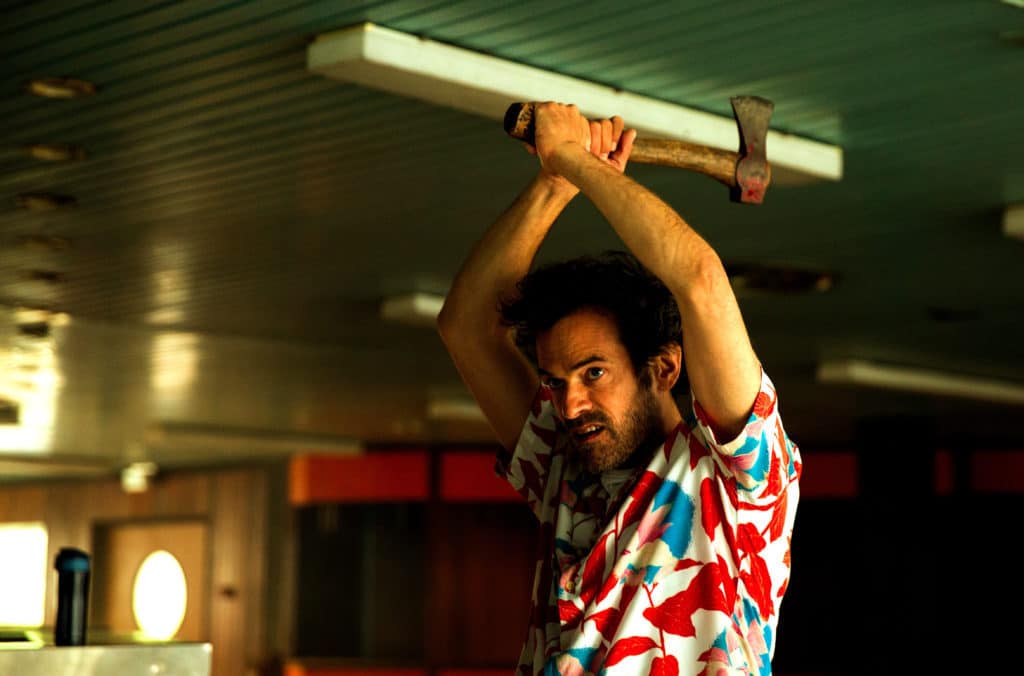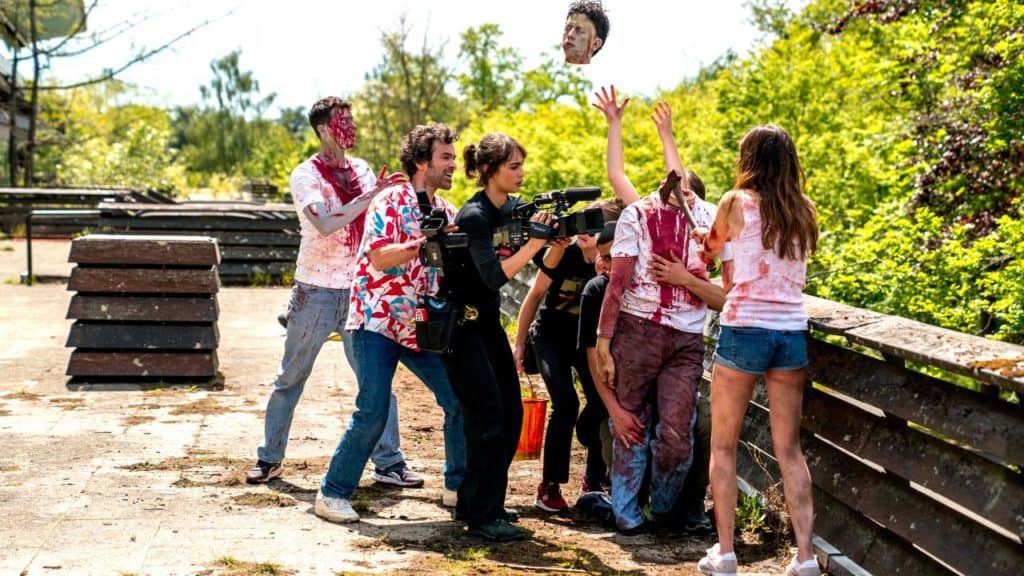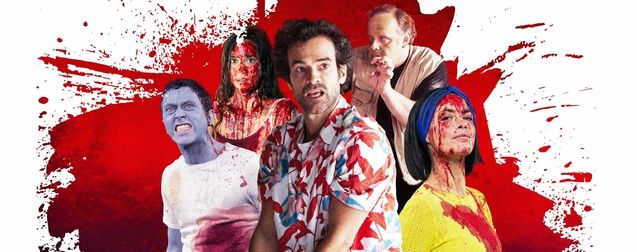As I mentioned in my text about Annette, the opening film at the Cannes Film Festival is generally nothing to write home about. This year’s opener was the latest film by Michel Hazanavicius. The title has been altered along the way, but now it goes under the name Final Cut (Coupez). When it was announced that it was a film about the shooting of a zombie film where actual zombies attack the actors, I was intrigued. Imagine the possibilities of the concept. First of all, the zombies could accuse the actors of cultural appropriation or demand that actual zombies should play all the roles. Then there is also the question of why zombies are always depicted negatively in cinema.
How many sympathetic zombie portrayals can you name? I can only think of Denis Lavant’s interpretation of the undead Alfred, stuck in an elevator in The Night Eats the World (La nuit a dévoré le monde 2018). Hazanavicius’ latest film is a meta-film about the shooting of a zombie movie. During the shoot, things go badly wrong, or maybe not as bad as it seems at first. On the way out of the screening, I overheard two people discussing the film, and one of them said, “The first thirty minutes were terrible, but then the rest of the film described why it looked that way”. That was clearly the effect that the director wanted to achieve.

In Hazanavicius’ film, we meet the director Rémi (Romain Duris), who seems to have little respect for his actors and seemingly will stop at nothing to get the performance that he is looking for. Once again, not everything is what it looks like. The film is a remake of the Japanese cult film One Cut of the Dead (Kamera o tomeru an!), a low-budget movie where most of the cast initially paid to be in the film. That couldn’t be further apart than a film conceived in Europe with taxpayer’s money.
Do the zombies get the Final Cut?
That fact hints at one of my major problems with the film; it feels too clean and polished, and the fact that it opens during the Cannes Film Festival enhances that impression. The new version is also fifteen minutes longer. That could be explained by one extra meta layer, but it is still evident that the film is overlong. The tone of the film is consistently hysterical, which wears out its welcome pretty quickly as well. It’s no surprise to find Bérénice Bejo in the cast. Generally, this film is short of surprises, especially if you’ve seen the Japanese original. Hazanavicius’s star has fallen since he won the Oscar for The Artist (2011).

Most people I’ve talked to said they wouldn’t even bother watching it. Still, the reviews in France were surprisingly positive, possibly because the expectations were not that high, to begin with. How you react to the film depends on how well you feel; the second part illuminates the first. I didn’t think it worked, but clearly, others did. In my mind, the director’s attempt at a mise en abyme failed. Surely, the film is no match for Adam Rifkin’s nutty Director’s Cut.

